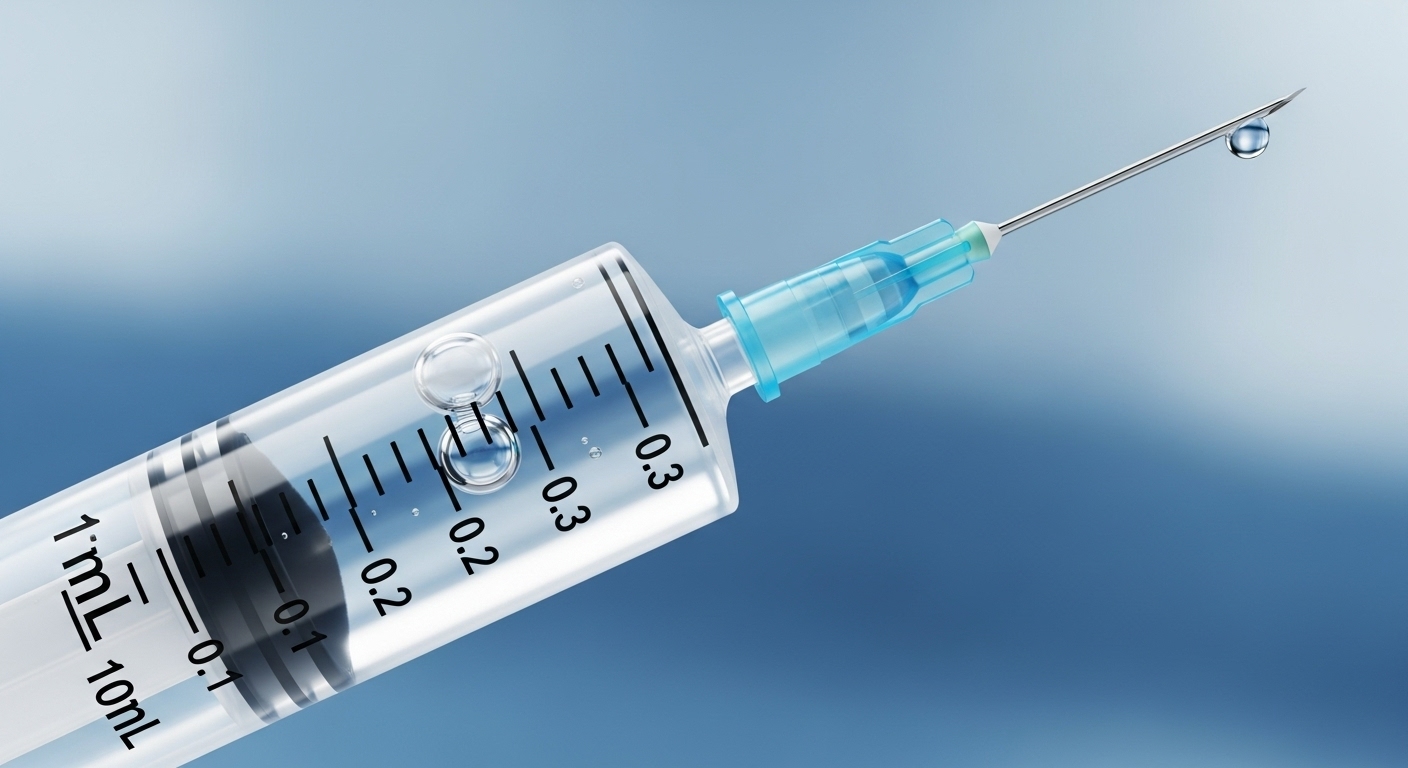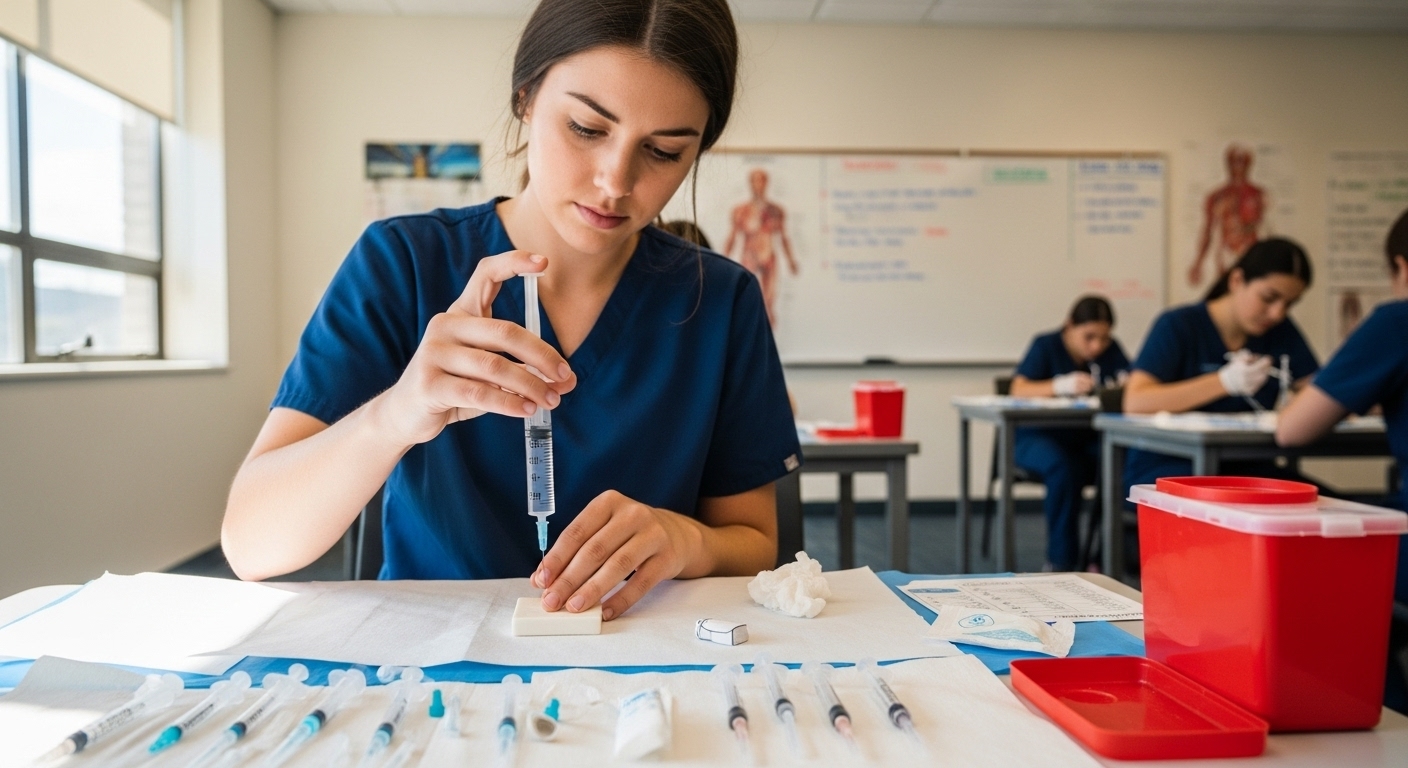How to Read Syringe Markings Accurately
Nov 17th 2025
Knowing how to read a syringe is crucial to all healthcare workers. Correct reading eliminates errors in doses that could cause harm to the patients. Syringes look simple, but understanding markings takes practice and focus. Even a small misread line can change a patient’s dose. According to the U.S. National Library of Medicine, about 21% of preventable drug errors are related to incorrect syringe measurements. Many of these errors occur because users misunderstand the lines or plunger position. Learning how to read markings, units as well as plunger rings will guarantee safe and proper dosing.
Home caregivers and healthcare professionals rely on accuracy each time they use a syringe. Each drop matters whether it is to administer vaccines, antibiotics or insulin. Consistency and confidence during reading measurements are the key to success. Understanding different syringe parts helps achieve that level of safety.

Understanding the Units: ML vs. CC
Each syringe has a measurement unit that indicates the amount of liquid contained in it. The millilitres (mL) and cubic centimetres (cc) are the two most common units. These two units are equivalent: 1 mL = 1 cc. In practice, the medical field prefers millilitres for standardization. Learning these units is the first step to reading markings properly.
The barrel of a syringe holds these markings in clear lines. Each marking represents a fraction of a millilitre. This design helps healthcare providers give precise doses every time. Understanding barrel design also helps users identify visibility differences in calibration. Some barrels have darker or wider lines to improve accuracy.
Exploring various barrel types helps new learners compare their measurement clarity. This visual difference becomes especially important for small-dose syringes. By studying calibration styles, one can master syringe amounts faster and reduce the risk of confusion.
Reading the Lines on Different Syringe Sizes
Each syringe size uses a different line spacing and increments. These markings depend on the syringe’s total capacity. Most syringes with needles used in hospitals range between 1 mL and 10 mL. Correctly reading these ensures proper dosage for injections or fluid removal.
Markings on a 1 mL (Tuberculin) Syringe
Allergy shots or small doses are usually administered with the help of a 1 mL syringe. It usually has markings every 0.01 mL. These fine markings ensure that it is good when making small and most precise measurements. Smaller syringes are used with short, thin needles. They can be employed for subcutaneous injections or intradermal use, which is ideal. The fine spacing of the device allows nurses to measure exactly what they require without overfilling.
Markings on a 3 mL Syringe
One of the most frequently used types in the clinic is the 3 mL syringe. It is easy to read because the lines are spaced at 0.1 mL. These syringes are fit to inject vaccines, antibiotics, and hormones. They combine accuracy and volume, and thus are useful in hospitals. The syringe sizes vary based on use, but this size remains most practical.
Markings on a 5 mL or 10 mL Syringe
Higher fluid volumes are administered with larger syringes such as 5 mL and 10 mL. They are labeled in 0.2 or 0.5 mL increments. They are used to irrigate, draw blood or mix solutions. These syringes are frequently associated with hypodermic systems that are designed for high-volume use. The larger barrel provides clear spacing, making the syringe measurements easier for bigger doses.
Each syringe type supports specific medical tasks. Understanding how markings differ by size ensures safer and faster use in all settings.
Where to Read the Measurement (Top Ring of Plunger)
One common mistake is reading the wrong part of the plunger. Always read the measurement at the top black ring of the plunger. Do not read the bottom or middle sections. This small detail matters more than most users realize.
According to the Institute for Safe Medication Practices, over 15% of liquid dose mistakes occur from reading the wrong ring. It’s essential to align the top ring with the correct marking line. That is where the real dose ends inside the barrel.
Holding the syringe at eye level ensures an accurate view. Avoid tilting or squinting when checking the line. Consistency in how you read each syringe helps reduce medication errors over time.
For more visual learners, training resources on choosing the right syringe and needle can help. These guides provide detailed images showing proper alignment and measurement techniques.
Practice Examples
Practice helps build comfort with how to read a syringe correctly. The more you practice, the easier it becomes to estimate and confirm doses. Nursing students often train using empty syringes filled with water. This allows safe learning without medication risk. The following exercises can be tried to build confidence:
- Fill a 1 mL syringe halfway and read off the marking on the eye level.
- Draw water up to the 1.5 mL mark into a 3 mL syringe.
- Practice to remove the bubbles of air and know its impact on visible measurement lines.
These hands-on examples help new learners understand spacing between increments. Many instructors recommend using practice kits before working with patients. It’s a safe way to study syringe sizes, mL, and align the plunger accurately.
Healthcare facilities also use practice charts for identifying specific dose readings. As an example, you look at “what is 25 on a syringe” and know that it is the 0.25 mL line. On the same note, it is simple to know “how much is 100 mL in a syringe” because it equals 100 mL across multiple syringes combined. Such clarity avoids any confusion during real-world use.
Understanding Calibration and Syringe Accuracy
Syringe accuracy depends on the clarity of its markings. The quality of the barrel and printed scale determines reliability. High-quality medical syringes are made with fine laser calibration. These lines remain visible even after repeated use.
Properly calibrated syringes ensure minimal error during filling or injection. Some syringes include colour-coded plunger tips for better visibility. The syringe amounts can be measured easily under bright or low light conditions. Modern syringes use transparent barrels for added accuracy and quick checks.
The needle gauge also influences the smooth flow of medication. Wider gauges can be used to flow faster and thinner ones for precision. The accurate dosing depends on the choice of the appropriate gauge and the type of barrel.

Safety and Storage of Syringes
Correct use of syringes helps to avoid contamination and dosage variation. Always keep them sealed until they are needed. One should not touch the tip or inside of the barrel. Disposal of used syringes should be done in designated sharps containers.
The syringe measurements may also be influenced by temperature when medication expands or contracts. Never keep syringes at temperatures other than room temperature unless instructed otherwise. For liquid medicines, expiry dates should be checked before using them.
Using disposable syringes more than once will result in inaccurate readings and a risk of contamination. Never store syringes where they do not belong (St. John Medical Staff, 2012).
Conclusion
To anyone who handles medications, it is necessary to learn how to read a syringe with accuracy. It guarantees the safety, accuracy and trust in each dose administered. Understanding units, barrel lines, and plunger positions prevents serious errors. With proper training, both professionals and home caregivers can master syringe reading quickly.
Practicing these steps will enhance patient safety and dosing accuracy. It avoids such misunderstandings around markings as “what is 25 on a syringe” or “how much is 100 ml in a syringe”. After you have developed some consistency, reading syringes is like second nature. Safe syringe practice helps to protect patients and healthcare providers in all settings.
For more guidance on choosing syringes, explore syringe barrels for calibration details. Learn how to read a syringe correctly with illustrated guides and examples. Visit the collection of needles and syringes to find medical-grade models for every purpose. Get professional-quality tools designed to match U.S. healthcare standards.

